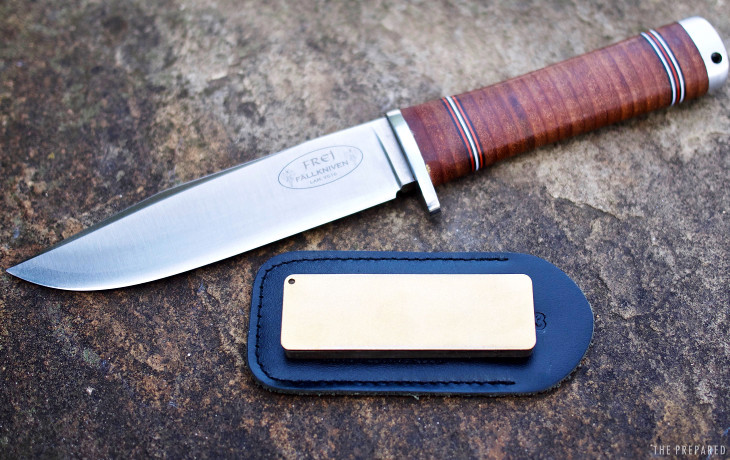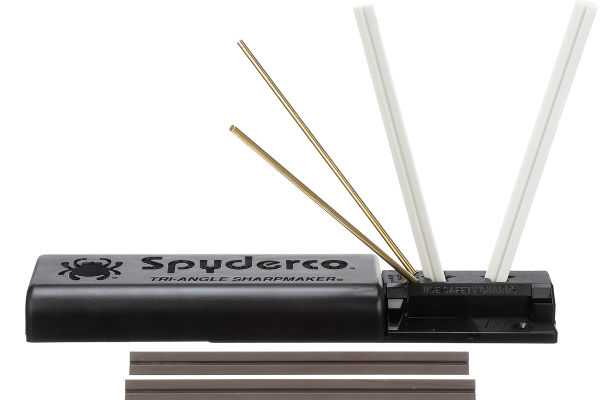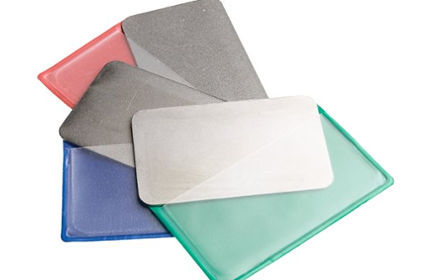Old-timer bushcrafters love sharpening stones for good reasons: stones are durable, compact, and, unlike strops, they never have to be re-loaded with compound or kept away from moisture.
And once you add free-hand sharpening with a stone to your bag of knife maintenance tricks, your environment will afford a near-infinite variety of usable “stones,” like the bottom of a ceramic coffee cup, or any suitably hard piece of ceramic, rock, or metal you may run across in an emergency.
Our knife experts recommend keeping a convex edge on your field knife and learning to maintain it by stropping, because convex edges and stones don’t mix well. But sharpening and maintaining a field knife using stropping alone is a more recent bushcraft and prepper practice that many old timers look at as a hipster fad; they prefer to do most or all of their sharpening with a fine-grit stone, and if they use a strop, it’s to finish off a stone-sharpened edge as a final buff.
If you’re not sure about how to use a sharpening stone — particularly when and why you would stone vs. strop — or even what the best field knife for survival is, give those a read first.
Whether you’ve got a knife with a Scandi grind, like the TOPS BOB, or a knife with a regular V-shaped edge profile, with enough practice a good stone can do it all.
It’s also the case that sometimes an edge gets severely damaged and you need to quickly remove a significant amount of metal, in which case nothing is better than a good diamond stone. Or you may need to straighten a bent edge, in which case you can use a steel rod or the bare edge of a metal diamond stone.
Bench stones vs. pocket stones
Stones come in two main types: bench and pocket. The difference is basically the stone size and how you hold/move the edge while sharpening.
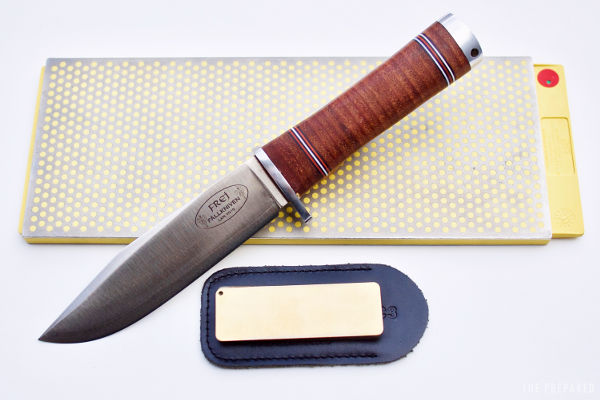
Bench stones are kept on a flat surface, like a workbench, while pocket stones are portable enough to throw in a sheath or bug out bag.
Bench stones sit still while you swipe the blade across. You can do the same with small blades on pocket stones, although sometimes it’s easier to flip it around with large blades (e.g. axes) by holding the blade fixed and moving the stone across the edge.
Why you should buy a diamond stone
Many professional knife sharpeners (it’s a real thing) and chefs use Japanese water stones exclusively for putting the finest edge possible on their knives, while many hunters and outdoorsmen swear by Arkansas stones.
But when it comes to prepping, this is one area of sharpening where there is no dispute: diamond stones beat everything else, hands down.
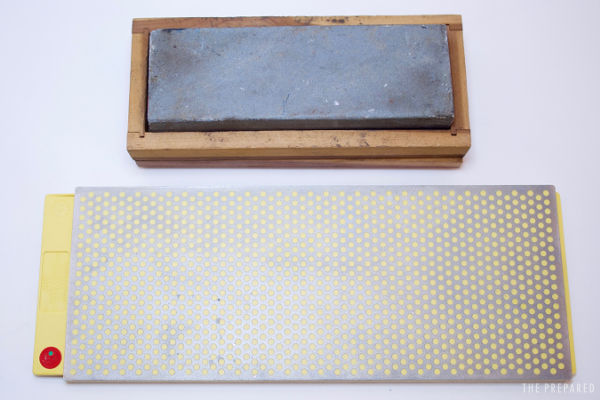
So-called “diamond stones,” also known as “diamond plates,” feature tiny industrial diamonds embedded in a metal substrate. This combination of diamond and metal has the following advantages over natural stones:
- Good, monocrystalline diamond stones from a top-tier maker like DMT will never wear out. Contrast to natural stones, which wear unevenly and must be “re-trued” (usually by rubbing them on a diamond stone).
- Diamond cuts quickly, so you spend less time sharpening.
- There’s no need for water or oil; you can use the stone dry, then wipe it down.
- Diamond stones are practically indestructible, so you don’t have to worry about them cracking or chipping.
For all of these reasons, diamonds are a prepper’s best friend. As great as natural stones are, they’re just not viable as a prep unless you’re one of the elite few who’s already so skilled with their favorite stone that they’re willing to carry it into a disaster, no matter the downsides.
Avoid complicated sharpening systems
There are a number of “sharpening systems” on the market that consist of a combination of diamond stones or rods and edge guides, the latter for holding a consistent edge angle as you work the blade across the sharpening medium.
Some of these systems are very good and can get you to a keen edge with little practice. But preppers shouldn’t plan to carry a full kit of guides and rods with them on a bug out, and should instead learn to free-hand sharpen. That being the case, this guide doesn’t cover any sharpening systems, and assumes you’ll be free-handing.
Best portable diamond stones for emergency bags
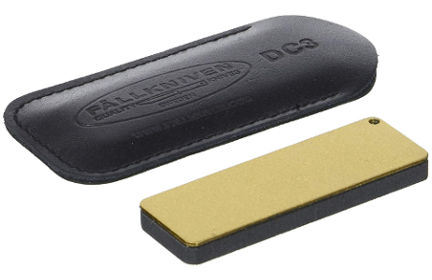
Best for most people:
Fallkniven DC3
For field use and pocket carry, the $15 Fallkniven DC3 is the gold standard that preppers everywhere use. In fact, the DC3 is such a standard pocket stone recommendation that the sharpening stone pouches on most aftermarket sheaths are designed for its dimensions. This stone has two sides: a diamond-impregnated metal side for fast, aggressive metal removal, and a ceramic side for finishing work and edge straightening.
The $22 Fallkniven DC4 is the next size up, as it’s both longer and wider than the DC3. If you’re buying a custom sheath and you can get a larger sharpening stone pouch sized to fit the DC4, then definitely consider upgrading. It’s only a few dollars more than the smaller stone and makes it easier to sharpen larger blades.
Slim and shiny:
DMT DiaSharp Set
If you want to max out your portable sharpening kit with an item that can do double prepping duty, pick up the credit-card-sized $25 DMT DiaSharp set and put a mirror polish on the back of the fine grit card. You’ll then have a single, compact, thin card that can sharpen any knife and can be used as a signaling mirror. The other cards in the set have other grits and will give you many sharpening options in a small package.
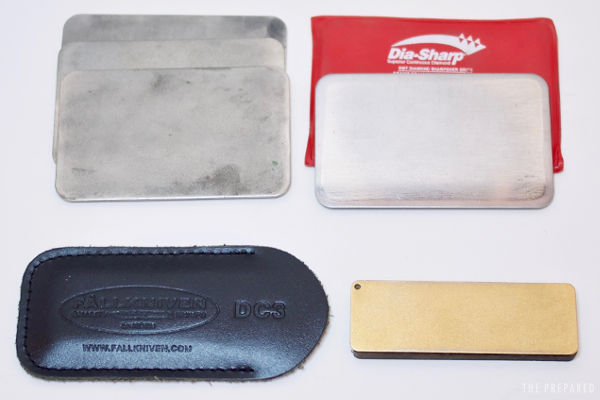
Best diamond bench stones for home supplies
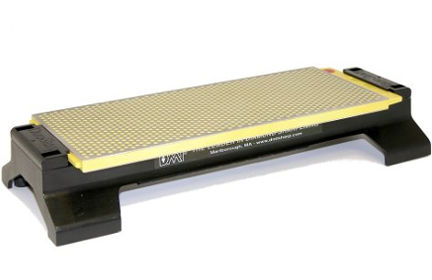
Great for your home:
DMT DuoSharp 10 Inch Fine/Extra Fine
We love the $110 DMT 10-inch DuoSharp Diamond Stone (Fine/Extra Fine) and its smaller sibling, the $80 DMT 8-inch DuoSharp (Fine/Extra Fine). The DMT DuoSharp bench stones are the equivalent of the DC3 pocket stone — they’ve been the gold standard for the past three decades.
The DuoSharp is a perfectly flat, large, two-sided stone (the “fine” and “extra fine” labels refer to each side) that comes with a holder. And unless you develop a water stone addiction, it’s the only sharpening stone you’ll ever need for the rest of your life for anything non-serrated that you’d want to sharpen.
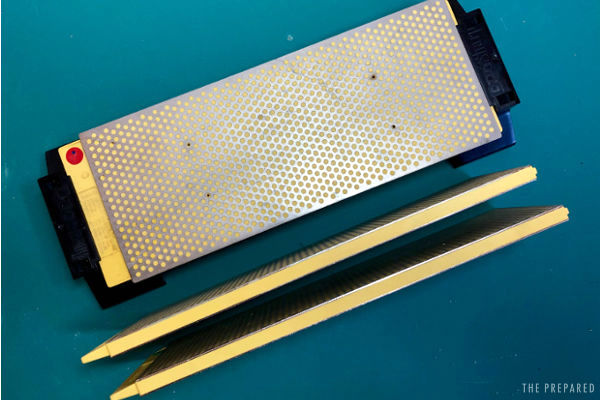
At well over $100, the 10-inch stone is not cheap — it’s a “buy once, cry once” type of product — and it’s not exactly compact at 10.5” x 4” x 0.4” and 1.45 lbs.
The benefit over the smaller 8-inch version is the larger surface area (and knuckle room) to easily sharpen a wide range of blades, including hatchets, axes, big kitchen cutters, and field knives larger than our recommended length of 3.5” to 5.5”.
If the price and size are impractical for you, or you don’t care about the ability to easily sharpen larger blades, then the 8-inch version is a fine option.
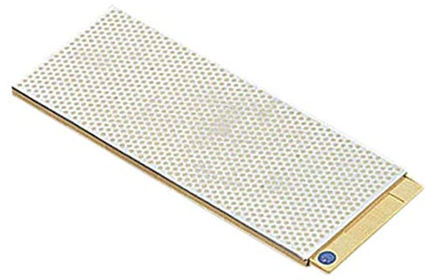
For a complete kit:
DMT DuoSharp Coarse/Extra Coarse Stone
Pick up some additional swappable stones if you care about a total sharpening solution that will cover all possible sharpening needs you’ll ever have until the end of time — including a complete SHTF scenario where the lights just never come back on.
The DuoSharp kits above come with the Fine and Extra Fine stones. Those grits are good enough for most people in most cases (fine for sharpening, extra fine for polishing), but if you add the $125 DMT Coarse/Extra Coarse stone, reshaping an edge or fixing serious blade damage will be much easier.
The $115 DMT Fine/Coarse stone splits the difference with a coarse and fine profile on one stone. That combination gives you maximum flexibility with minimum footprint, as you’ve got a coarse side for repairing major edge damage quickly and a fine side for the core sharpening work that you’ll do before finishing off with a strop or fine sandpaper.
Warning: You really should know what you’re doing before putting a blade on a coarse diamond stone, which is why we don’t recommend the fine/coarse stone as best for most people. You can always remove metal from a blade, but you can’t put metal back on, so it’s better to slowly fix a damaged edge via many strokes on a fine stone than it is to quickly ruin it with a few strokes on a coarse stone.
However, if your sharpening skills are strong enough to properly use a coarse stone, and you’re confident that you can make and use a strop in the field, then the fine/coarse stone might be a better “one stone for everything” option than the fine/extra fine stone we recommend as best for most people.
